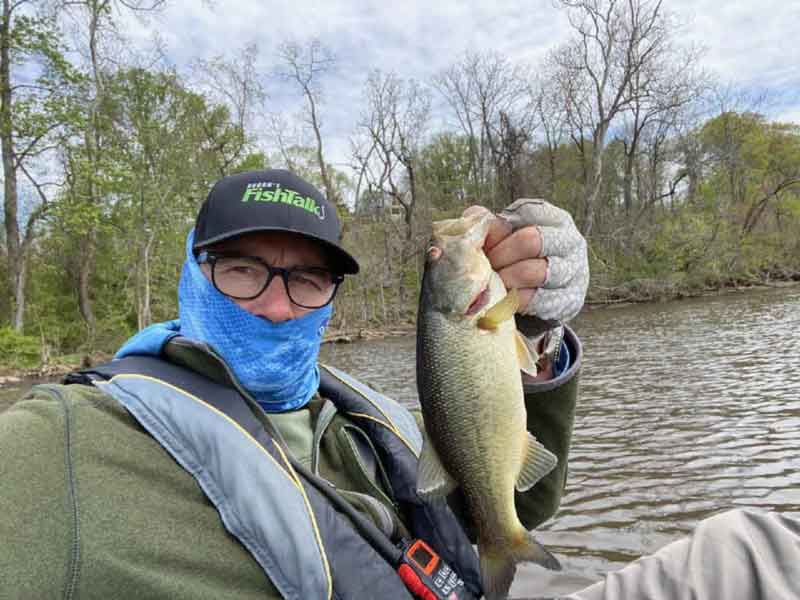When I go fishing I primarily fish out of a kayak, and for that reason I am on the water a lot. In fact, in 2019 I fished over 140 days on a watercraft with another 110 days of stream and pond fishing. My reason for using a kayak is economics: they are low cost vessels. You can pick up a nice kayak for much less than a powerboat. It doesn’t take much to keep up on maintenance, basically just keep it washed. Also, they are lightweight and easy to handle. The kayaks I often use are shorter vessels, 10 feet in length. I find they are easier to maneuver in tight spaces, but they do have a size disadvantage on big water like the Bay. Therefore, I normally limit my outings to favorable weather conditions, such as when the winds are less than 13 mph, and no thunderstorms are in the forecast.

A while back while checking the weather it got me thinking about kayak safety, particularly as winter closes in. I checked the Maryland Department of Natural Resources website to refresh my memory, for kayak safety tips.
Okay, let’s start with the obvious: lifejackets. I personally wear a lifejacket whenever I am on the water in my kayak. This is my number one priority when I head out. I fish a lot of waters that have quite a bit of boat traffic on them. In a kayak you’re basically sitting on the water and in a powerboat, even if it’s moving slowly, the captain may not see you. Statistics show that in 48 percent of kayak fatalities the people weren’t wearing lifejackets. Even though Maryland boating regulations only require that you carry a wearable lifejacket, I wear a lightweight Type V inflatable/manual lifejacket at all times. It’s comfortable enough to wear all day long. There are all types of kayak fishing lifejackets you can purchase that wear comfortable and have plenty of pocket storage, too, so my advice is to get yourself a comfortable lifejacket.
Equally as important as a lifejacket is to create a float plan. Having one and sharing it with someone is critical, so if you’re overdue people know where to look for you. Whenever I hit the water I let my wife know where I’ll be fishing. Sometimes I go as far as to do a screen capture of my GPS location on my phone and text it to her. I give my location, and if I’m fishing up river or down river. On a large body of water like the Blackwater, I let her know which section of the reserve I’ll be fishing. I also give the amount of time I’ll be on the water. Okay, there are times that I tell her I’ll be home at a certain time and then I’ll make a few more casts. Guilty. But I will text or call her letting her know that I’ll be out a little longer.
Next, carry a sound-producing device. I personally carry a whistle. You can also carry a bell or horn. I carry a whistle because it’s basically waterproof and is attached to my lifejacket. If your kayak turns over anything not attached to you will most likely end up on the bottom.
Always carry a flashlight or some sort of white light on your kayak when fishing in the dark of the early morning or evening. I have a white light on a pole that I use if I go out before sunrise or sunset. The pole I use is actually a fishing rod that I broke the tip off fighting a big rockfish, so I put it to good use, placing it in one of my rod holders when I head out in the dark.
Always be aware of your surroundings. I fish a local creek near my home and it has almost every boat you can imagine cruising and sailing on it. I try as much as possible to stay out of the channel, but if I must, I cross over the channel at a right angle, limiting my time there. I will also stay between the channel markers and the shoreline, where most of the fish will be anyway. I carry a portable marine radio, too. It’s normally tuned to channel 16. As well as for emergencies, I can use it to communicate with other anglers in my group, check the weather, and listen to normal chatter that may impact my outing. A portable marine radio is a great investment.
Be sure to wear the appropriate clothing for your outing. If it’s cold out be sure to layer up and wear warm clothing, and in sunny weather use sunscreen. Carry plenty of water to drink (winter, spring, summer, or fall), as wind and sun can dehydrate you quickly out on the water. And bring a snack. I like to take peanut butter crackers for a little protein and some carbs to get me through the day.
Plan for emergencies; I always carry a small knife, pliers, and scissors. I carry a small first aid kit, too. There have been times where I’ve hooked myself, been bitten by a bug, or poked by a fin of a fish I’ve caught, and needed that first aid kit.
It’s important to know your limits and be sure to use a kayak that can handle what you are asking it to do. You don’t want to take a sit-inside river kayak, which is made to fight the rapids, out fishing on the Bay or a tributary. All that said, be safe out there and have fun kayak fishing!
- By Eric Packard
You can find out more about winter paddling safety at the National Center for Cold Water Safety.